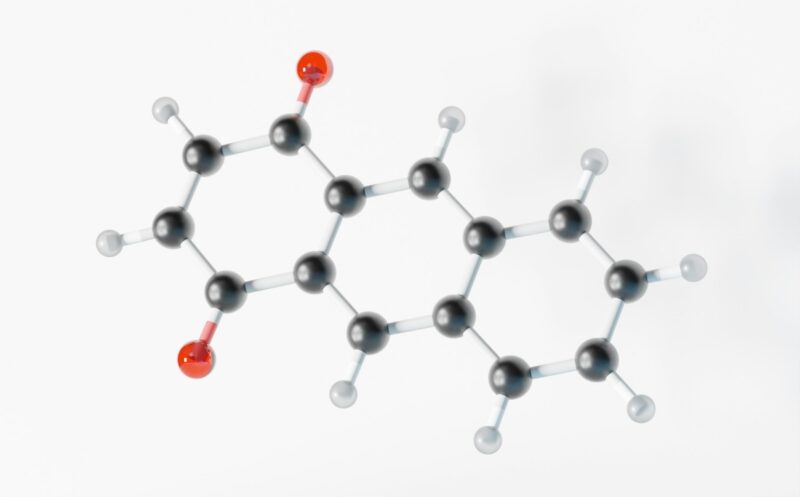Nonapeptide‑1 (also known as Melanostatine‑5) is a synthetic biomimetic peptide that has emerged as a focus of research into pigmentation control, receptor pharmacology, and broader signaling pathways. Built from an amino acid sequence mimicking a fragment of alpha‑melanocyte‑stimulating hormone (α‑MSH), this nonapeptide is believed to exhibit fascinating receptor interactions that may support melanin synthesis and cellular signaling. The following article explores suggested properties of Nonapeptide‑1, its mechanistic hypotheses, and the research domains where it might hold relevance, strictly within research models.
Molecular Profile and Receptor Affinity
Nonapeptide‑1 possesses the amino acid sequence Met‑Pro‑D‑Phe‑Arg‑D‑Trp‑Phe‑Lys‑Pro‑Val‑NH₂. As a competitive antagonist at the melanocortin‑1 receptor (MC1R), it is believed to mitigate signaling initiated by α‑MSH. Quantitative binding data suggest a Ki of around 40 nM for MC1R, with markedly lower binding affinities (on the order of micromolar) for other melanocortin receptor isoforms, such as MC3R, MC4R, and MC5R. Mitigatory concentrations include an IC₅₀ of approximately 2.5 nM against α‑MSH–induced increases in intracellular cAMP, and about 11 nM for mitigating melanosome dispersion in melanocyte-like cells.
Mechanistically, Nonapeptide‑1 is believed to weaken signaling through MC1R, thereby suppressing tyrosinase activation—a key enzyme in melanogenesis—and downregulating pigmentation-related factors, such as TRP1, TRP2, and MITF, in keratinocyte and melanocyte research models.
Melanogenesis and Pigmentation Research
Research indicates that Nonapeptide‑1 may support melanin synthesis indirectly by interfering with transporter dispersion and receptor signaling. In keratinocyte (HaCaT) and epidermal melanocyte cell models (HEM), implications of the peptide in the presence of UVA radiation is associated with downregulation of MC1R expression and reduced levels of tyrosinase, TRP1/2, and MITF, suggesting a diminished pigmentation phenotype even under melanogenic stimulation. Investigations suggest that this modulation may lead to a reduction in melanin production by approximately one-third without fully abolishing melanogenic capacity.
Such outcomes may be relevant for research into pigmentation disorders, such as hyperpigmentation or melasma, and for the exploration of pigment cell signaling, offering a controlled way to interrogate receptor-mediated melanocyte responses under controlled conditions.
Broader Research Domains and Receptor Signaling
Beyond melanogenesis, Nonapeptide‑1 is thought to open avenues in broader melanocortin receptor research. MC1R is known to be expressed on certain immune and neural cell types, including periaqueductal grey matter structures involved in nociception. Thus, studies suggest that Nonapeptide‑1 might be relevant to research models examining pain perception, inflammatory signaling, or neuro-immune interactions by modulating GPCR signaling.
Furthermore, receptor antagonism at MC1R could be explored in endocrine or adrenal gland research. Some investigations suggest MC1R involvement in adrenal steroidogenesis; targeted antagonism may therefore help model differential pathway activation in research on adrenal physiology or melanoma pathology.
Speculatively, in tumor biology research, Nonapeptide‑1 is thought to serve as a tool to assess whether MC1R antagonism supports melanoma cell proliferation or morphology. Certain cell line exposures to MC1R mitigators have been associated with reduced cell growth rates and increased morphological uniformity in melanoma research models. However, the direct support for Nonapeptide‑1 in this context remains to be evaluated.
Proposed Research Implications
01. Pigmentation Modulation Models
In controlled research models of melanin overproduction, such as hyperpigmented keratinocyte-hepatocyte co‑culture systems, the peptide might be trialed for its potential to reduce melanin indices. Quantitative measurement of melanin content, tyrosinase activity, and receptor expression may illustrate mechanistic pathways better supported by Nonapeptide‑1.
02. GPCR Signaling and Intracellular Signaling Pathways
By serving as a selective MC1R antagonist, Nonapeptide‑1 seems to offer a tool for dissecting downstream signaling cascades, including cAMP-mediated cascades, MITF regulation, and receptor internalization. Coupling receptor binding assays, second messenger quantification, and transcription factor activation modules may yield insight into GPCR regulation.
03. Inflammatory and Oxidative Stress Research
Since melanogenesis might generate reactive oxidative species (ROS), antagonism of pigmentation pathways via Nonapeptide-1 may indirectly reduce oxidative markers. Exploration of ROS production, inflammatory cytokine expression, and antioxidant response elements in pigment cell models might reveal secondary properties of the peptide, with relevance for cell stress research.
04. Cancer Biology Probe Tools
Although not directly studied in melanoma, the peptide may be hypothesized to slow melanoma cell growth by antagonizing MC1R. Research models involving melanoma cell lines expressing MC1R could be exposed to Nonapeptide‑1 to assess changes in proliferation, cell cycle markers, or morphological consistency under controlled conditions.
05. Adrenal and Endocrine Signaling
Research indicates that, given the expression pattern of melanocortin receptors in adrenal tissues, the peptide might be applied in systems exploring steroidogenic regulation at the receptor level. Models such as cultured adrenal cortical cells with MC1R expression might prove to be relevant in evaluations of whether Nonapeptide‑1 modulates cAMP‑dependent steroidogenic cascades.
Mechanistic Hypotheses and Research Speculation
It has been theorized that Nonapeptide-1 binding to MC1R blocks access to α-MSH, thereby suppressing cAMP elevation and tyrosinase activation. As a result, organisms in research environments might suggest reduced melanin synthesis and decreased melanosome dispersion. Investigations purport that this mechanism is selective, minimally supporting other melanocortin receptor subtypes, thus offering receptor specificity in signaling studies.
It has also been hypothesized that aligning receptor antagonism in pain‑related neural tissues may modulate nociceptive thresholds or inflammatory responses. Though direct data are lacking, MC1R expression patterns in nociceptive circuits offer a speculative basis for research in sensory physiology.
Future Prospects and Research Opportunities
- Receptor subtype fine-mapping: Comparative exposure of Nonapeptide‑1 across cells expressing MC1R, MC3R, MC4R, and MC5R may deepen specificity profiling.
- Synergistic receptor modulation: Cooperation between Nonapeptide‑1 with melanocortin agonists or other modulators may reveal interaction dynamics in GPCR regulation.
- Cancer cell line exploration: Applying Nonapeptide‑1 to melanoma cell lines with known MC1R expression may uncover supports for cell growth, morphology, and gene expression.
Summary
Nonapeptide‑1 is a targeted receptor antagonist derived from α‑MSH, with high affinity for MC1R and selective mitigation of melanin synthesis signaling pathways. Its properties—including downregulation of tyrosinase, TRP1/2, and MITF, as well as reduced intracellular cAMP levels—offer a platform for exploring pigmentation regulation, GPCR signaling, oxidative stress, and potentially endocrine or tumor biology.
While much remains to be studied—particularly beyond pigmentation models—the peptide’s receptor specificity and mechanistic clarity provide fertile ground for investigations across multiple research domains.
In research environments, Nonapeptide‑1 is hypothesized to serve as a powerful tool for dissecting melanocortin‑mediated signaling, mapping pigmentation control, and exploring receptor-mediated pathways in diverse cellular contexts. Continued investigation into its potential support for oxidative stress, neural and immune signaling, and melanocyte‑derived tumor cells may yield deeper insights into both fundamental receptor biology and potential translational research models. For more information check this product.
References
[i] Dall’Olmo, L., et al. (2023). Alpha‑melanocyte stimulating hormone (α‑MSH): biology, clinical relevance and implication in melanoma. Journal of Translational Medicine, 21, 562. https://doi.org/10.1186/s12967‑023‑04405‑y
[ii] Kadekaro, A. L., et al. (2007). Defining MC1R Regulation in Human Melanocytes by Its Agonist α‑Melanocortin and Antagonist HBD3. Pigment Cell & Melanoma Research, 20(6), 611‑620.
[iii] Pils, M. C., et al. (2010). Involvement of the melanocortin‑1 receptor in acute pain and pain of inflammatory but not neuropathic origin. PLOS ONE, 5(9), e12525.
[iv] Bagnara, J. T., et al. (2023). Single‑cell profiling of MC1R‑inhibited melanocytes defines a MC1R‑inhibited gene signature (MiGS). Pigment Cell & Melanoma Research, 37(3), 445‑460.
[v] Sciacca, M. G., et al. (2016). MC1R Functions, Expression, and Implications for Targeted Therapy. Journal of Investigative Dermatology, 136(4), 703‑712.
Image Credit: Ayush Kumar on Unsplash











